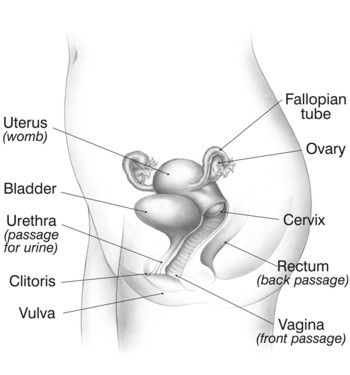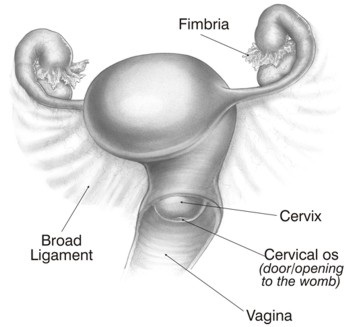understanding your fertility, page 3 of 14
Understanding a Woman’s Fertility

This simplified side view of the pelvic area shows the location of her reproductive system.
The outer vaginal area is called the vulva and three passages lead down to this area.
The first passage is the urethra, the urine duct which leads down from the bladder.
The back passage is the rectum or bowel passage which is the end of the intestines leading down from the stomach.
The middle passage is the vagina where intercourse occurs. Towards the top of the vagina is the cervix which acts as the door to the womb.
At the upper broad end of the womb are the two fallopian tubes which end in delicate fingers called fimbria. They caress the surface of each ovary, searching for a ripening follicle (egg sac), ready to receive the egg when it is released at ovulation.
Front View of the Womb, isolated from the structures around it

For fertilisation (conception) to take place, sperm have to swim from the vagina, through the cervix, up into the womb and along the tubes to unite with the egg in the outer third of the fallopian tube. But the journey is full of hazards.
The first problem they meet is vaginal acidity, which exists for much of the monthly cycle and destroys sperm life.
The second hurdle is the cervical os, the door to the womb, which acts like a valve controlling the access of sperm. For much of the woman’s monthly cycle, it remains tightly closed and sealed, blocking the access of sperm, confining them to the acid vagina where they are destroyed.
For a few days before ovulation, the cervix opens wide and secretes an alkaline mucus to entice the sperm upwards into the cervix so that they can travel up into the tubes to fertilise the egg on its release. This is the only time pregnancy is possible. This is explained more fully in the next two diagrams.
- Previous |
- Next |
- Exit Tutorial |
- Help |
- Download as a PDF
© 2011 Fertility Education & Training